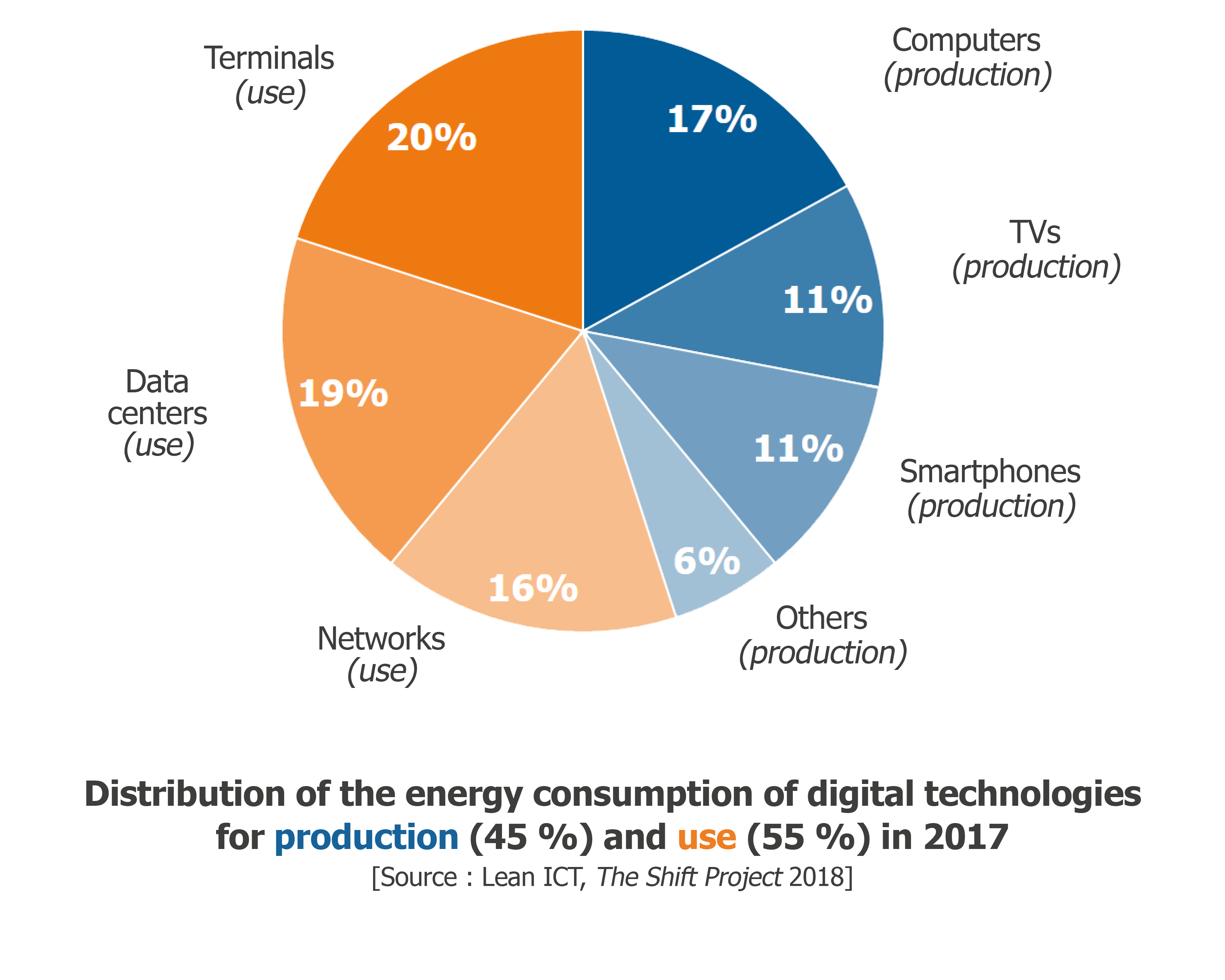Lesson 13Website technologies
- Notion 77 - Static and dynamic webpage: what are the differences?
- Notion 78 - How databases work and what their ecological impact is
- Notion 79 - Is a static website a solution for web eco-design?
- Notion 80 - What is a CMS?
- Notion 81 - What is WordPress?
- Notion 82 - Why optimize your WordPress?
- Notion 83 - How to optimize WordPress?
- Notion 84 - How to turn WordPress into a static website
- Notion 85 - Check your understanding of the main concepts of the lesson.
Notion 78
How databases work and what their ecological impact is
Target skills
Digital pollution is complex to understand because it seems invisible. But as we have learnt already our daily activities such as making a video call, consulting a webpage or watching an online video do have an environmental impact, although sometimes difficult to measure up. The same may apply to people who develop tools, sites or offer online services (we will see how to calculate and control the environmental impact of a website in Lessons 15 and 16).
However, the digital world - the way it is used and shaped worldwide nowadays - generates almost 4% of the world's greenhouse gases (The ShiftProject, 2018). This is why it is important to identify and understand the digital pollution mechanisms. We are focusing on databases, a key component of today's web navigation.
Data, database and data management system
A database is a collection of data that is organized, stored and accessible from a computer system when a request is sent. It is usually controlled by a database management system (DBMS). Both dynamic and static pages can use databases, but dynamic webpages call the database for each request, whereas static webpages do not (see previous Notion). Databases are most widely used to support companies’ internal operations and to handle online interactions with customers and suppliers.
How databases work
A database consists of stored tables of data (like spreadsheets), which are automatically manipulated by codes, queries, and formulas when a user makes a request on a dynamic website. This database will then process, manage, organize and provide access to data that are relevant for this specific request. A database is updated whenever data stored in it is changed, deleted or added, for each request received.
Digital pollution and databases
According to Greenpeace, digital pollution refers to all forms of pollution caused by the IT sector: greenhouse gas emissions, chemical contamination, erosion of biodiversity, and production of electronic waste. It can come from different consumption items as you can see on the diagram below, but we will focus on databases here.

Image description:
A pie chart on the distribution of energy consumption of digital technologies for their production (45%) and use (55%) in 2017. Source: Lean ICT, The Shift Project, 2017.
For their production:
- Computers account for 17% of the energy consumption of digital technologies
- Televisions, 11%.
- Smartphones, 11%.
- Other devices, 6%.
For their use:
- Terminals/devices account for 20% of the energy consumption of digital technologies.
- Data centres, 19%.
- Internet network, 16%.
Databases and data centres (physical infrastructures) have an environmental impact, particularly because of the amount of energy they require to operate: they consume a lot of electricity, which generates a lot of CO2 to be produced (they also create heat and need water to cool down, other environmental impacts). This is the case for each phase of database's use, multiplied by the number of requests made and the number of databases built (or to-be-built):
- The simple fact that the machine or centre that hosts the database is supplied with electricity
- The sending of a request to a database, which uses bandwidth
- The simultaneous update of the database according to the request
- In response, the transfer of data, which also uses bandwidth
- The storage of data (which can be more or less heavy, and potentially kept for a long time)
Database environmental challenges
Databases operations in all their use phases raise several challenges, related to how digital information is consumed and used today:
- The current referencing logic, which is that frequently updated content will be more visible and therefore potentially more consulted, creating even more pollution
- The practice of opening new databases and data centres rather than focusing on responsible data management
- The end-of-life issue for databases and data centres, which involves the management of waste and data that are not always recoverable
- The exponential movement of digitization of society on everything (connected objects, etc.) and everywhere, which creates new needs and products rather than promoting other approaches like low-tech
- The web giants’ hegemony over the use of databases, which makes them the biggest digital polluters
- The current trend in the digital market, based on data trading.
To go further
“The environmental footprint of the digital world” GreenIT study (2019): https://www.greenit.fr/wp-content/uploads/2019/11/GREENIT_EENM_etude_EN_accessible.pdf
An article by The ShiftProject on the environmental impact of ICT: https://theshiftproject.org/en/article/unsustainable-use-online-video/